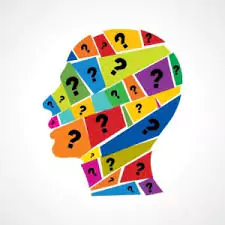 Every year, psychologists make amazing discoveries about the ways the human brain works. Throughout decades of research, specialists have revealed numerous correlations between an individual’s behavior and ways of thinking, and their childhood, environment, relationship with parents and peers, gender, significant events, and many other factors. One of such discoveries is the influence of color on the human mind—in particular, on the decision-making process. This influence turned out to be so significant that companies all over the world started to pay color a lot more attention when developing brands and introducing products on the global market.
Every year, psychologists make amazing discoveries about the ways the human brain works. Throughout decades of research, specialists have revealed numerous correlations between an individual’s behavior and ways of thinking, and their childhood, environment, relationship with parents and peers, gender, significant events, and many other factors. One of such discoveries is the influence of color on the human mind—in particular, on the decision-making process. This influence turned out to be so significant that companies all over the world started to pay color a lot more attention when developing brands and introducing products on the global market.

✅ AI Essay Writer ✅ AI Detector ✅ Plagchecker ✅ Paraphraser
✅ Summarizer ✅ Citation Generator
Science has provided numerous confirmations to this thesis. For instance, a study called “Impact of Color in Marketing” reveals that the first impression a customer makes about a product is based on the product’s color in 90% of cases. Another research study, “The Interactive Effects of Colors” shows that purchasing significantly depends on whether the color fits the brand or the product; in other words, colors define characteristics that customers subconsciously imbue products with. According to a number of additional studies, a brand’s recognizability depends on the colors used, which makes them extremely important for the process of brand development and creating brand identity (Entrepreneur). Considering this, it becomes clear why many famous brands keep using the same colors in their logos and design for decades; Pepsi, Coca-Cola, McDonald’s, Apple, Microsoft (the Windows OS logo, in particular), FedEx—not only they have developed recognizable symbols, but also made certain colors an inalienable part of their corporate style.
Psychological mechanisms underlying this correlation are rather interesting. The human brain identifies colors as informational clusters, each conveying its own message. Warm, bright colors, for example, such as orange, red, yellow, or beige, are active and eye-catching; they are perceived as friendly and energetic, and may motivate customers to enact certain behaviors. For example, it is known that orange and red, apart from their other properties, can increase appetite; this is why many fast-food restaurants use these colors in decor and logos. Cold bright colors, such as silver or azure, are calmer, and are commonly associated with aesthetics and freshness. They are often associated with professionalism, rationalism, and harmony; brands willing to emphasize these characteristics often use cold, bright colors in their designs. A lot of companies in the health industry and commerce use cold tones. Warm darker colors such as brown, dark-gold appeal to status, classics, and luxury. These colors are often associated with expensive products aimed at highlighting the social and financial status of a customer. Cold, dark colors (blue, green, navy), in their turn, provide the feeling of stability and high quality, which is the reason why scientific, governmental, and financial organizations use them in their designs so often. Finally, neutral colors—grey, black, and white—are used to compliment other color combinations (Blurgroup).
Brands all over the world have become keen on using colors to convey complex messages to their customers. For example, Japan Airlines (JAL) communicates an image of a powerful, authentically Japanese transportation airline, and wishes its customers good luck during the flight. How? The logo of JAL consists of several components: a red bird in a white circle. The bird is an easily recognizable symbol of flight; at the same time, in many Asian countries, red is considered to be the symbol of luck and wealth. The red color on the white field resembles Japan’s national flag. Altogether, these elements form a clear message to customers. Another prime example is the UPS (United Parcel Service) brand image design; it is brown, which resembles traditions and solidity. The shield creates an additional feeling of dependability, and the company’s name illustrated in its golden color communicates additional reliability (Color Matters).
It can be seen that colors are used in branding for a solid reason. Studies show that the majority of customers are influenced by a brand’s coloring when deciding whether to buy or not to buy a certain product. Subconsciously, customers imbue brands with certain characteristics, based on the colors companies use in their designs; therefore, for brands, it is crucial to communicate their messages to customers clearly by using appropriate colors.
References
Kaminska, Paula. “The Impact of Color in Advertising, Marketing, and Design.” Blurgroup. N.p., 14 Oct. 2014. Web. 07 Dec. 2015.
“Color Design and Psychology for Branding.” Color Matters. N.p., n.d. Web. 07 Dec. 2015.
“The Psychology of Color in Marketing and Branding.” Entrepreneur. N.p., 15 May 2014. Web. 07 Dec. 2015.
Follow us on Reddit for more insights and updates.





Comments (0)
Welcome to A*Help comments!
We’re all about debate and discussion at A*Help.
We value the diverse opinions of users, so you may find points of view that you don’t agree with. And that’s cool. However, there are certain things we’re not OK with: attempts to manipulate our data in any way, for example, or the posting of discriminative, offensive, hateful, or disparaging material.